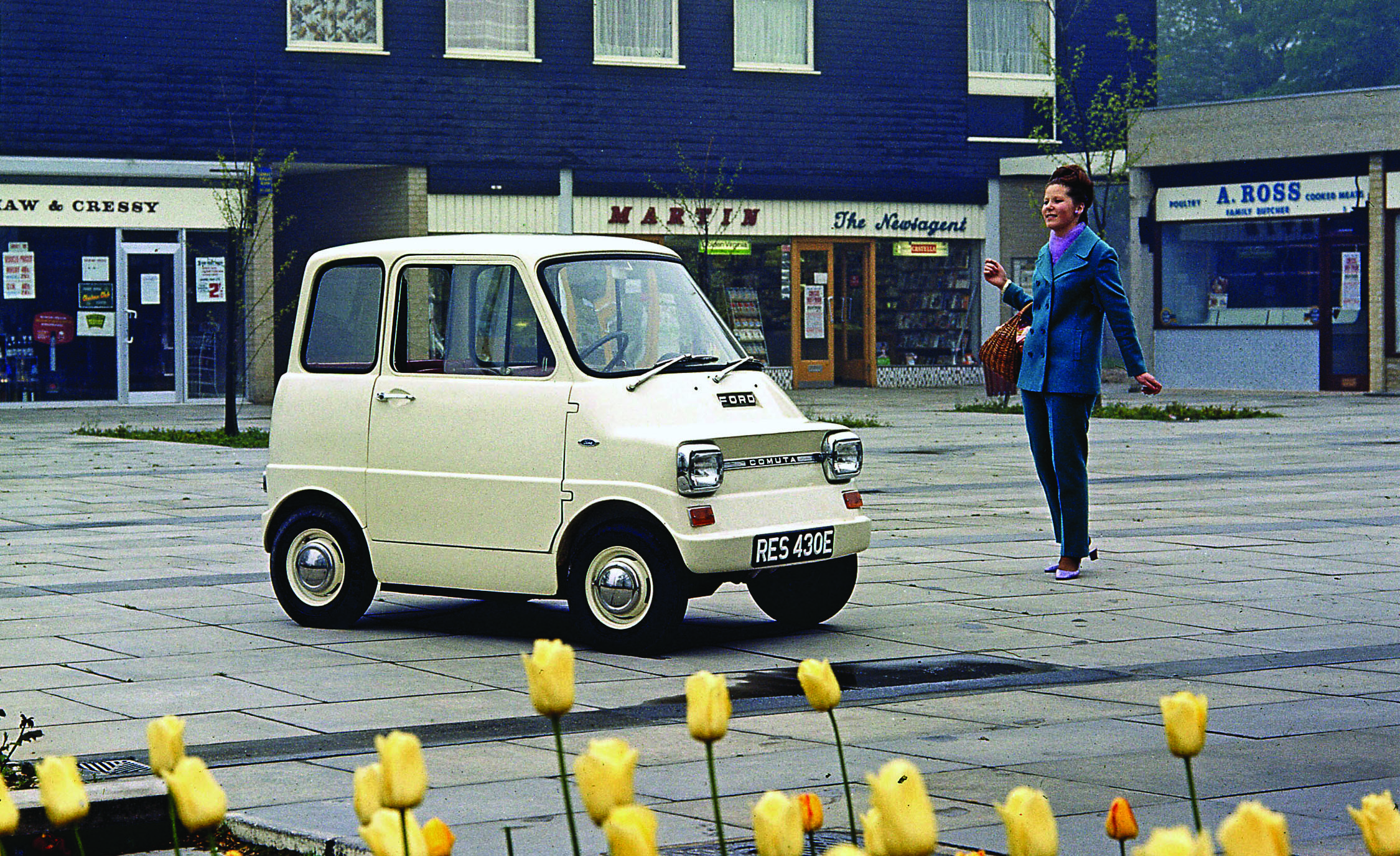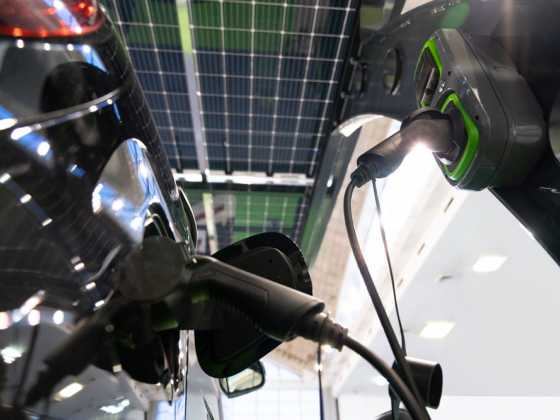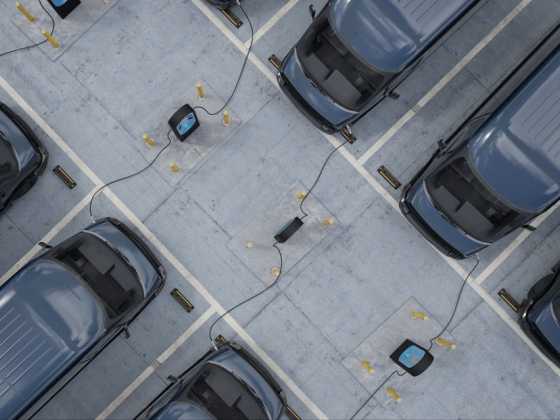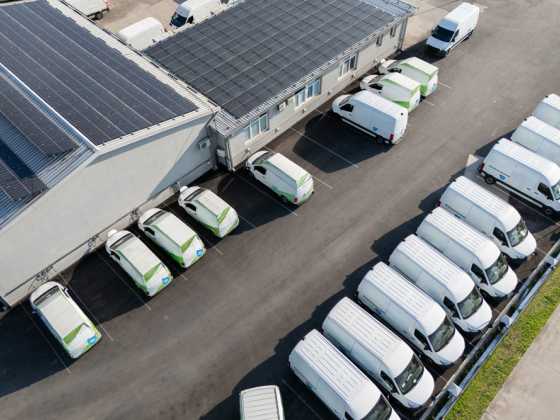Electrifying! A brief EV history

From three-wheeled wooden cars to sophisticated digital technology-laden machines, the battery electric vehicle has changed beyond perception over almost 180 years. Richard Gooding dons his rose-tinted spectacles
Electric vehicles are seen as a modern invention as well as an answer to growing environmental concerns. However, their development spans almost 180 years. First appearing in the mid-19th century, high cost, low top speeds and short ranges put paid to them becoming the answer to personal mobility. Instead, the technology was employed in other transport industries – such as rail – but just how far has electric vehicle technology come to encourage sales of over one million units in 2016? GreenFleet takes a trip back in time to examine some of the more notable EVs which have helped contribute to the modern-day low-carbon success story.
First electric horseless carriage
One of the first known electric vehicles was produced by Scottish chemist Robert Davidson in 1837. A five-tonne locomotive, its practical value was limited thanks to its non-rechargeable batteries, but later that decade, another Scotsman, Robert Anderson is said to have invented the first electric horseless carriage. Once again, though, non‑rechargeable battery technology stopped Anderson’s pioneering vehicle becoming little more than an anomaly.
Meanwhile, in The Netherlands, chemistry professor Sibrandus Stratingh and German instrument maker Christopher Becker experimented with steam power, and unhappy with the smoke, noise and discomfort steam‑powered vehicles produced, decided to make an electrically-powered car. The pair’s first electric car could drive around 15 minutes until the current was exhausted. The seeds of electric propulsion had been sown.
In 1881, the first electric vehicle to be powered by rechargeable batteries debuted. Built by French inventor Gustave Trouve, it featured a ‘second cell’ design which could discharge and recharge the lead-acid batteries, which had been created by Belgian Gaston Planté. Over in the US, business associates Henry Morris and Pedro Salom designed and built an electric vehicle, and even though Electrobat weighed 1,927kg, it could reach 15mph and range was an impressive 50 miles.
In the UK, electric vehicles started to look viable when Walter C Bersey of the London Electrical Cab Company unveiled the zero‑emission Bersey taxi in 1896. Sadly, the electric cab proved to be rather too futuristic for its own good. Expensive to run and temperamental, the travelling public soon lost confidence in them and by 1900, the Bersey had been withdrawn from service.
First age of the electric car
At the turn of the 20th century, almost 40 per cent of cars sold in the US were electric, petrol‑powered rivals languishing almost 20 per cent behind. More open roads highlighted electric cars’ less viable range, though, but they still proved popular in urban areas. However, the invention of the electric starter by Charles Kettering and the mass production techniques employed by Henry Ford, brought down the prices of petrol-powered models, and sounded the death knell for the first age of the electric car. It was a different story in the commercial vehicle arena, though (see panel), where buses and small vans delivered on the EV promise of low emissions and quiet running.
It wasn’t until the end of the 1950s when electric car fever once again took hold. In the US, the Henney Kilowatt saw a powertrain manufactured by a vacuum cleaner company installed into the body of a Renault Dauphine. The Kilowatt was the last ‘production’ EV for the next couple of decades, the 1960s and 1970s being fertile years for electric vehicle concepts and development.
Car maker Ford announced the Commuta in 1967. As its name implied, the 6ft‑long cube of a car was designed primarily for urban use. Engineered at Ford of Great Britain’s engineering centre in Dunton, Essex, the Commuta was a four-seater at a push (as long as the rear passengers were children) and featured many production car luxuries such as dipping headlights and a heater. A quartet of 12V/85A lead-acid batteries gave a range of 40 miles at 25mph. Arguably the most-resolved electric car yet from an major manufacturer, the plug was pulled on the Commuta in 1971.
Two years later, though, Britain’s best hope for a production EV appeared. The Enfield 8000 (neé 465) was an aluminium‑bodied two-door hatchback with vaguely ‘proper car’ proportions, and a 48V DC series 4-pole electric motor as well as eight 12V 110Ah lead-acid batteries. The Electricity Council’s involvement saw 61 cars ordered with as many as 120 reported to have been built. A 55-mile range and 40mph top speed meant it was practical, but at £2,808 in 1975, its high cost wasn’t. So the 8bhp Enfield faded into obscurity in 1977, until motoring journalist and TV presenter Jonny Smith turned one into an 800bhp electrically-powered dragster and claimed the fastest street-legal electric vehicle in the world title in July 2016.
Advancement of battery technology
It wasn’t just the UK and the US taking up the EV baton, though. During 1970, Nissan developed a two-seater electric prototype with Hitachi in Japan. The advancement of battery technology meant a lighter weight, and proved that the Japanese company had shown electric car interest before unveiling the all‑conquering LEAF almost four decades later.
Elsewhere, Fiat announced a series of city car EV prototypes from 1975-1977, the Electric Town Car being the most notable. A 45-mile range (at a steady 30mph) and a top speed of 47mph meant the omens were good, but it was replaced by the petrol-powered Panda in 1980. Ironically, an all-electric Panda, the Elettra, was on sale from 1990‑1998.
The dawn of the 1980s saw an exciting new age, and seemed the ideal decade technologically for the electric car. It didn’t get off to a great start. In 1985, the Sinclair C5 was the UK’s great white hope. Launched to large fanfare by Sir Clive Sinclair, the C5 was a three-wheeled electric vehicle aimed at revolutionising city centre transport. Sadly, the £399 machine proved a flop, despite being around 10 times cheaper than a 998cc Austin Mini City E and claims that it could be driven for five miles on one penny’s worth of electricity.
More conventional electric cars also appeared in the 1980s. Peugeot produced an electric 205 hatchback in 1984 with 72V 200Ah nickel‑cadmium (NiCd) batteries which could be charged through a 16A or 40A socket over the course of eight hours. Although Volkswagen had dabbled with electric versions of its Golf in the 1970s, 1985 saw the arrival of the Golf CitySTROMER. A 16bhp DC motor and 16 lead-acid gel batteries gave 50 miles of range, while charging time varied from eight to 12 hours. A second version appeared with the third-generation Golf in the 1990s and paved the way for the e-Golf of 2014.
EV coming of age
The 1990s was when electric vehicle technology really came of age. In 1992 French manufacturer Renault unveiled the Zoom, a folding electric car concept which laid the foundations for the later Twizy of 2012. An upwards‑folding body shortened the wheelbase when parking, while an auto‑synchronous AC electric motor drove the front wheels. With a range of 90 miles and a recharge time of two hours to 80 per cent capacity, the Zoom previewed many of the EV qualities to come a decade-and-a-half later. A lesser-known electric version of the Clio, the Elektro Clio, was based on the running gear of the Zoom but featured cheaper batteries.
Also in 1992, Citroën unveiled its Citela EV concept, which claimed an even greater range of 130.4 miles. Three years later sister company Peugeot produced an electric version of its 106 small car and this was the start of EVs being sold in larger numbers. An electrification project based in the French town of La Rochelle saw the high-profile 106 Electrique sell more than 2,000 units to local authorities and spawned Citroën AX and Saxo versions, which shared the 106’s powertrain. Several hundred 106 Electriques were run in the UK, too, by customers such as Coventry Police and the Nottinghamshire Millennium project.
1996 saw the launch of GM’s EV1 in the US. Able to achieve a claimed range of between 70 and 90 miles, and EV1 was short‑lived. Marketed as ‘The car of the future…. today’, production stopped in 1999. The car almost had the EV hopes of a generation placed upon it, its 137bhp produced by 26 recyclable lead-acid batteries and a three‑phase AC motor. Range was said to be 90 miles at 55mph, but an optional 70Ah nickel-metal hydride (Ni-MH) battery gave 100 miles and technology we are used to today included a pre-conditioning system.
The Toyota RAV4 EV of 1994 previewed technology which the Japanese manufacturer would, just a short time later, play a large part in its history. Based on the production RAV4, the EV version featured a permanent magnet electric motor in outputs of 45 or 50kW, while a theoretical range of 124 miles was mooted. While the RAV4 EV provided important engineering lessons for the first‑generation Prius in 1997, a second version arrived in 2010, with input from a certain Californian company named Tesla…
Elsewhere, Honda unveiled its first production electric vehicle, the US-only EV Plus in 1997, which was only available on a three-year leasing contract. Ford meanwhile reinvented its Commuta concept for the New Millennium with the E-Ka, a lithium‑ion (Li‑ion) battery-powered version of its European Ka city car with 95 miles of range.
World’s best-selling EV
One of the more recognisable EVs arrived in 2001. The REVAi, known as the G-Wiz in the UK, was made by the REVA Electric Car Company in India and was classed as a quadricycle. A hit with London residents looking to avoid the recently-introduced Congestion Charge, the odd-looking £9,995 G-Wiz had a maximum range of 48 miles. The little car also heralded the arrival of a basic UK EV charging infrastructure in public places. It was replaced by the Mahindra e20 in 2015.
The same year the G-Wiz appeared, Ford once again went down the city car EV route with the Th!nk. Bought as part of Norwegian company Pivco, the ABS plastic-bodied and NiCd battery-powered car had a real-world range of 50 miles, and through large high‑profile fleets positioned around commuter hot spots, around 1,005 Th!nk cars were built before the concept was sold again in 2006.
August 2009 marked the birth of the current holder of the best-selling electric car in the world title. The Leading Environmental‑friendly Affordable Family car – or LEAF – was unveiled by Nissan CEO Carlos Ghosn and was the world’s first purpose-designed zero-emission electric car from a major manufacturer. The laminated 24kWh Li‑ion battery pack developed up to 90kW along with 100 miles of range. The 80kW synchronous electric motor drove the front axle, while a charging time of 30 minutes to 80 per cent capacity using a 50kW charger saw the LEAF become a game-changer when it came to mass‑production EVs. Updates throughout the car’s life have seen a new 30kWh battery version with a 155 miles range.
A flurry of EVs appeared in 2011 and 2012. The 2011 Mitsubishi i-Miev, Citroën C-Zero and the Peugeot iOn were essentially the same car, all based on the Japanese variant, while the Vauxhall Ampera was a re-badged Chevrolet Volt. Powered by a 63kW 1.4-litre petrol engine and 111kW electric motor, mated to a 16kWh Li-ion battery pack, the Ampera/Volt was capable of around 30 miles on electric power alone. Once the battery was depleted, the petrol engine kicked in to power a 55kW electric generator to extend the car’s electric-only range.
The 2012 Renault Fluence Z.E. was the first car from the Renault Z.E. (Zero Emission) programme. The compact saloon featured a 22kWh lithium-ion battery and a 70kW electric motor with a potential range of 115 miles. The smaller Renault Zoe also arrived in 2012 using a similar 22kWh battery to the Fluency Z.E. Mated to a 65kW electric motor, range was claimed to be 130 miles. Updated in 2015 with the option of a 150-mile ‘R240’ motor, the car was again updated in 2016 with a new ‘ZE40’ 41kWh battery. Range was claimed to be a massive 250 miles, with 190 miles to be expected in ‘real-world’ situations.
Perception-busting 265 miles of range
After building the small-volume all-electric Roadster from 2008, Tesla Motors of California unveiled its Model S luxury car in June 2012. A perception-busting 265 miles of range was available from the 85kWh battery pack, which gave the car the highest available driving distance of any production electric car. Numerous output versions arrived soon after, with the magic 300-mile range marker surpassed by the 90 and 100kWh models.
Not cheap, one of the benefits of the Tesla was that it gave access to a global network of public DC-rapid ’Supercharging’ stations, which were free to use for owners of the car. Up to 135kW of power could be put into the car, which gave 85kWh models an additional 180 miles of range in just 15-30 minutes. The Model S became the first electric car to top the monthly new car sales ranking in any country, while global Model S sales passed the 150,000 unit milestone in November 2016. An SUV model, the Model X was introduced in 2015, while a new smaller saloon, the Model 3 is due for release in 2017.
While manufacturers such as Fiat, Ford, Hyundai, Kia, Mercedes-Benz, and Volkswagen have launched production electric cars since 2013, the other major notable milestone in EV development came with the BMW i3. Launched in 2013, the purpose-designed electric car took lessons learned from BMW’s Mini E and ActiveE trial programmes which loaned electric versions of the Mini hatchback and BMW 1 Series to drivers around the world to gain valuable data. The i3 spearheaded BMW’s new ‘i’ brand and along with the i8 range-extending sports car gave electric vehicles that all-important wow factor.
Built partly from carbon-fibre reinforced plastic, the i3 featured a 125kW electric motor and a 22kWh lithium-ion battery pack, which delivered 80-100 miles of electric range. A range extender version like the Vauxhall Ampera employed a small petrol engine to boost available distance to 150 miles. In 2016 a new 33kWh battery model saw an increase of range to 125 miles, while the range-extender model could potentially reach 206 miles. Very much a premium car, the i3’s head-turning design wasn’t for everyone, but it was a clear intent from a major manufacturer that electric vehicles are now very much party of the automotive landscape.
From a big start in the late 19th century to a take-up dip in the early 20th century, electric vehicle sales are once again on the rise. While they still make up a small percentage of global vehicle sales, over one million units were sold across the world up to September 2016. With more notable breakthroughs to come in 2017 – such as the 200-mile plus Chevrolet Bolt/Opel Ampera-e – and ever-tightening emission legislation, both the number of EVs on our roads and their development pace can only increase. We look forward to telling their ever‑evolving and exciting story.
FURTHER INFORMATION
www.greenfleet.net






